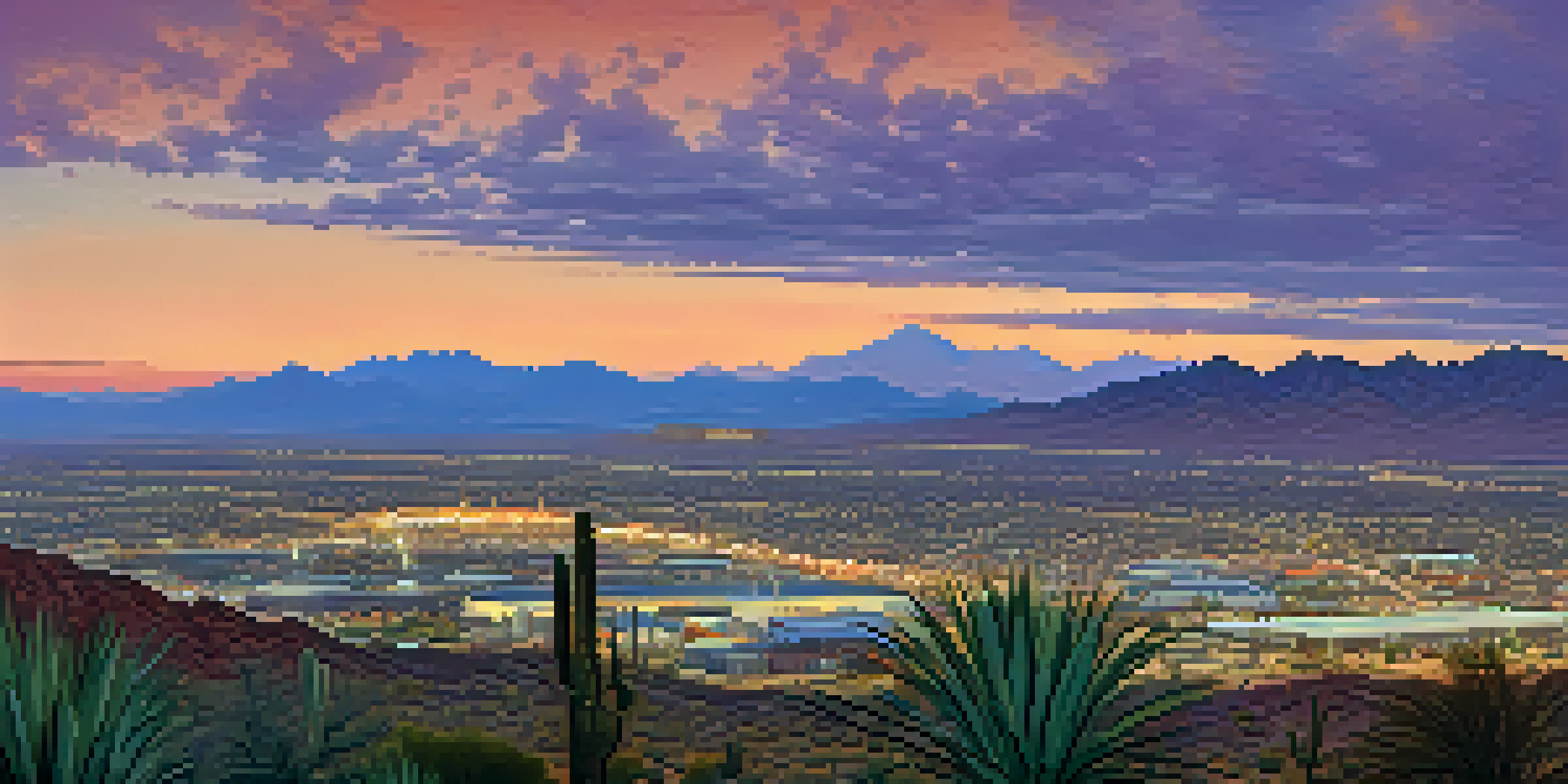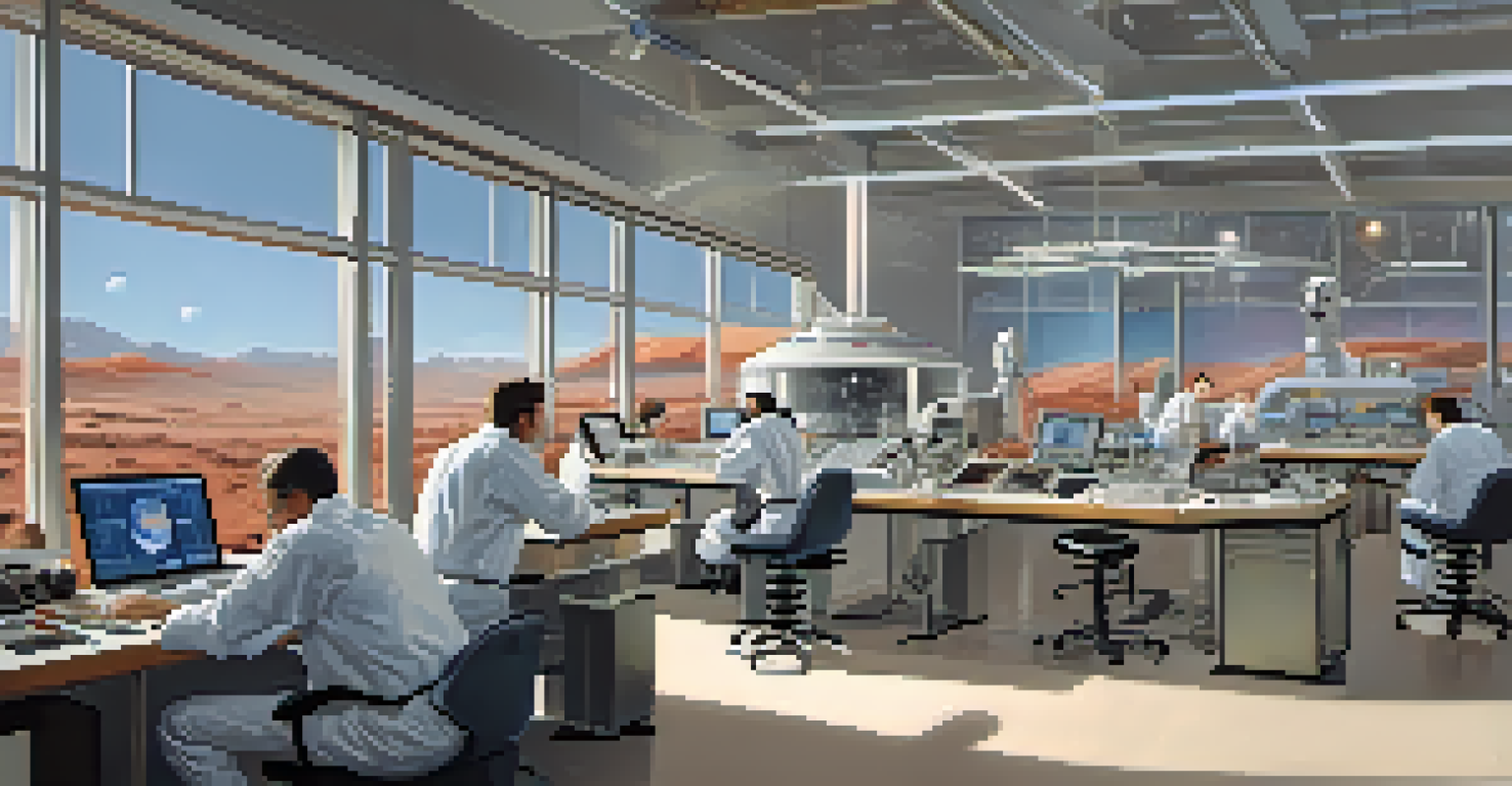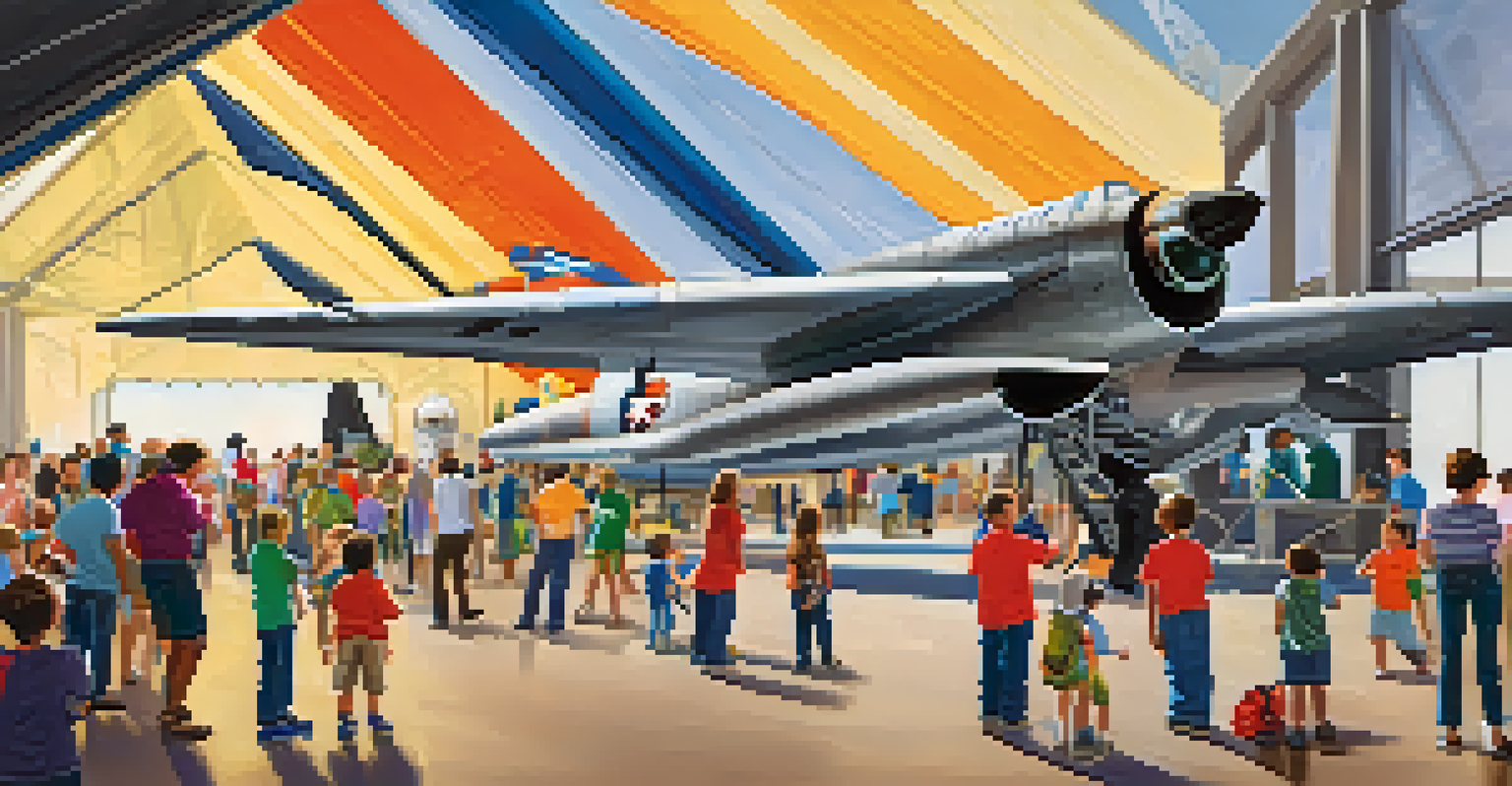Tucson's Role in NASA Missions: A Historical Perspective

The Origins of Tucson's Connection to NASA
Tucson's relationship with NASA began in the mid-20th century, coinciding with the space race. The city's strategic location and favorable climate made it an attractive site for various aerospace activities. Additionally, the presence of research institutions like the University of Arizona provided a robust foundation for collaboration with NASA.
The Earth is the cradle of humanity, but mankind cannot stay in the cradle forever.
In 1961, the establishment of the Lunar and Planetary Laboratory in Tucson marked a significant milestone. This lab became a hub for planetary science and played a crucial role in preparations for lunar missions. Researchers in Tucson contributed valuable insights into the geology and potential resources of the Moon, which were essential for the Apollo program.
As NASA sought expertise in planetary exploration, Tucson quickly became a center for training and research. The city's universities and institutions fostered a spirit of innovation that would influence many future missions. This early connection laid the groundwork for Tucson's lasting legacy in the field of space exploration.
Key NASA Missions Involving Tucson's Expertise
Over the years, Tucson has been integral to several high-profile NASA missions. One notable example is the Mars Pathfinder mission, which launched in 1996. The mission's success relied heavily on the work done by the University of Arizona's Lunar and Planetary Laboratory, where scientists developed critical instruments for the mission.

The Mars rovers, Spirit and Opportunity, also had Tucson's fingerprints all over them. Researchers from the University of Arizona contributed to the design and functioning of cameras used on these rovers, allowing for stunning imagery and data collection from the Martian surface. This collaboration showcased Tucson's growing prominence in planetary research.
Tucson's Role in Space Exploration
Tucson has become a pivotal hub for NASA missions, thanks to its research institutions and innovative aerospace companies.
Additionally, the development of the Mars Reconnaissance Orbiter, which launched in 2005, further solidified Tucson’s role in NASA missions. The orbiter has provided invaluable data about Mars, enhancing our understanding of the planet's climate and geology. Tucson's contributions continue to resonate in ongoing explorations of Mars.
The University of Arizona's Pioneering Role
The University of Arizona is a cornerstone of Tucson's contributions to NASA. Its Lunar and Planetary Laboratory has been a breeding ground for groundbreaking research in planetary science. The collaboration between university researchers and NASA has led to numerous innovations that have advanced space exploration.
Space exploration is a force of nature unto itself that no other force in society can rival.
Notably, the university played a pivotal role in the design of the HiRISE (High-Resolution Imaging Science Experiment) camera aboard the Mars Reconnaissance Orbiter. This camera has captured breathtaking images of Mars, revealing details about its surface and atmosphere. Such advancements underscore the university's significance in NASA's mission to explore the cosmos.
The educational programs at the University of Arizona also inspire the next generation of space scientists and engineers. By providing students with opportunities to engage in real-world projects, the university ensures a continuous flow of talent into the aerospace sector. This nurturing environment highlights Tucson’s ongoing commitment to space exploration.
The Impact of Tucson's Space Industry
Tucson’s space industry has seen significant growth over the years, transforming the local economy. With the presence of companies like Raytheon and others focused on aerospace technology, Tucson has become a hub for innovation. These organizations frequently collaborate with NASA on various projects, enhancing the city’s reputation in the aerospace sector.
The synergy between local businesses and research institutions has fostered a unique ecosystem that supports NASA missions. By leveraging local talent and expertise, these companies contribute to advancements in satellite technology, space communication, and mission design. Tucson's role is not just as a participant but as a vital contributor to national efforts in space exploration.
University of Arizona's Contributions
The University of Arizona plays a crucial role in advancing planetary science, producing vital technologies for NASA's space missions.
Moreover, the investment in the aerospace sector has created numerous job opportunities in Tucson, making it a desirable location for professionals in the field. This thriving industry supports a wide range of STEM careers, further solidifying Tucson's status as a leader in space technology and exploration.
Tucson's Role in Earth and Space Science Research
In addition to its contributions to planetary missions, Tucson plays a vital role in Earth science research. Local institutions conduct studies on climate change, geology, and environmental science, providing critical data that supports NASA's Earth observation initiatives. This research underscores the interconnected nature of Earth and space science.
The University of Arizona's Department of Planetary Sciences also emphasizes the importance of understanding our own planet to better comprehend others. By analyzing Earth's systems, researchers can draw parallels and make predictions about other celestial bodies. This holistic approach enhances NASA's mission to study the universe.
Furthermore, the availability of advanced observatories in the region allows for continuous monitoring of both Earth and space phenomena. These facilities enable scientists to gather data that inform NASA's Earth science missions, leading to improved forecasting and better understanding of natural events. Tucson's contributions are far-reaching, impacting both our planet and beyond.
Community Engagement and Space Education
Tucson takes pride in its commitment to engaging the community in space education. Local museums, such as the Pima Air & Space Museum, offer interactive exhibits that inspire curiosity about aerospace and science. These institutions serve as gateways for residents and visitors alike to explore the wonders of space.
Educational programs in schools also emphasize the importance of STEM fields, encouraging students to pursue careers in science and technology. By partnering with local universities and NASA, these programs provide hands-on experiences that ignite a passion for space exploration among young learners. Tucson fosters a culture of inquiry and innovation.
Community Engagement in STEM
Tucson actively promotes STEM education and community involvement in space science, inspiring future generations to pursue careers in aerospace.
Additionally, public events and lectures featuring prominent scientists and astronauts are regularly hosted in Tucson. These gatherings not only educate but also build a sense of community around the shared excitement of space exploration. Engaging the public in this dialogue ensures that Tucson remains at the forefront of space awareness.
Looking Ahead: Tucson's Future in Space Exploration
As we look to the future, Tucson is poised to continue its significant role in space exploration. The city's growing reputation as a center for aerospace innovation attracts new research initiatives and collaborations. This momentum promises to enhance Tucson's contributions to upcoming NASA missions and beyond.
Emerging technologies, such as artificial intelligence and advanced robotics, are set to reshape the landscape of space exploration. Tucson’s institutions are already investing in research and development to harness these technologies, ensuring that the city remains relevant in an evolving field. The potential for new discoveries is vast and exciting.

In conclusion, Tucson's historical and ongoing contributions to NASA missions are a testament to its vibrant aerospace community. The synergy between local institutions, businesses, and the public ensures a bright future for space exploration. As Tucson continues to inspire and innovate, it will undoubtedly play a pivotal role in the next chapter of our journey to the stars.